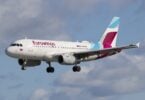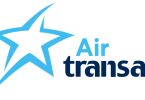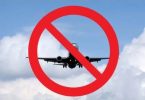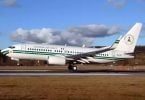OneWorld wants to limit its size, while Star Alliance thinks of membership’s differentiation.
Although global alliances in the airline industry seem to only look to have more members, strategies can vary. OneWorld wants to concentrate exclusively on quality members. “Size does not matter. We really favor quality over quantity,” said John McCulloch, managing partner of OneWorld, during the recent IATA meeting.
The alliance recently announced the integration in 2010 of S7 -Russia’s largest domestic carrier with a growing international activity. “S7 offers all the guarantees in terms of quality and reliability. The airline will definitely enhance the OneWorld brand,” said Gerald Arpey, CEO of American Airlines.
Mexicana is another airline due to join before the end of the year. Mexicana recently reopened flights to Europe to complement the network of its future partners British Airways and Iberia.
McCulloch said he remains cautious about OneWorld including new partners. “We still need partners in Brazil, China and India. For China, we have been for a long time in discussion with China Eastern in Shanghai. However, due to the reshaping of air transport by China, it might take a while before we come to a new agreement. We are also in talk with Kingfisher and Jet Airways in India but it is still too early to make any announcement,” he added.
Once a deal inked with a Chinese and Indian partner, McCulloch does not see any other partnership in Asia. “ We do not focus Southeast Asia as we estimate to have already a good network and strong partners such as Qantas in the region,” said McCulloch.
OneWorld’s main weakness –when compared to Star Alliance- is probably its relatively lack of visibility for consumers. The alliance has recently launched a communication campaign in Europe and started to paint some aircraft in OneWorld colors. It has officially asked the government to be granted an anti-trust immunity pact on North Atlantic routes by US and European aviation authorities. The pact should include American Airlines, British Airways, Iberia and Royal Jordanian. “We are confident to get the green light from authorities. We believe it will deliver additional benefits to our customers if we can be put on a same foot than our competitors,” said American Airlines’ Arpey. OneWorld has claimed it is hoping to get an answer by October.
Meanwhile, competitor Star Alliance continues to integrate new members with a target of 26 carriers in 2010 compared to 21 today. The alliance will soon take on board Air India, Brussels Airlines, Continental Airlines, TAM (Brazil) and – last announced- Aegean Airlines (Greece). Rumors indicate the integration of further partners in Africa.
As Star Alliance is increasingly turning into a giant association of airlines of various calibers, difficulties emerge to coordinate decisions. It must then redefine relations between its members to be sure to preserve a relative homogeneity and efficiency.
According to Star Alliance CEO Jan Albrecht, the alliance is looking to introduce various degrees of involvement for its members. Premium members will basically continue to shape the destiny of the alliance with a more active role than second-tier members. Each airline will be able to choose its future status. Discussions are now going on to shape the new Star Alliance.






















